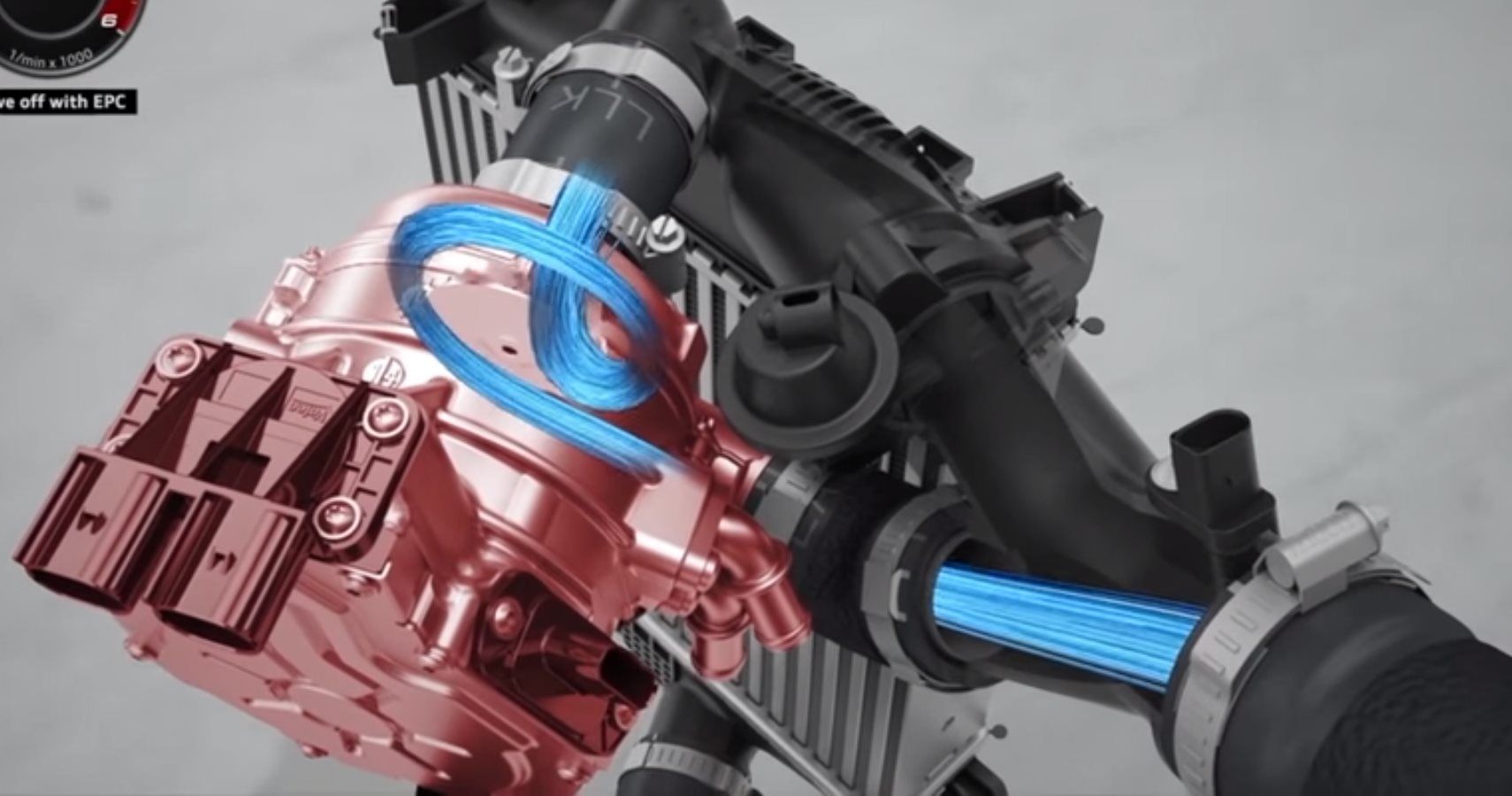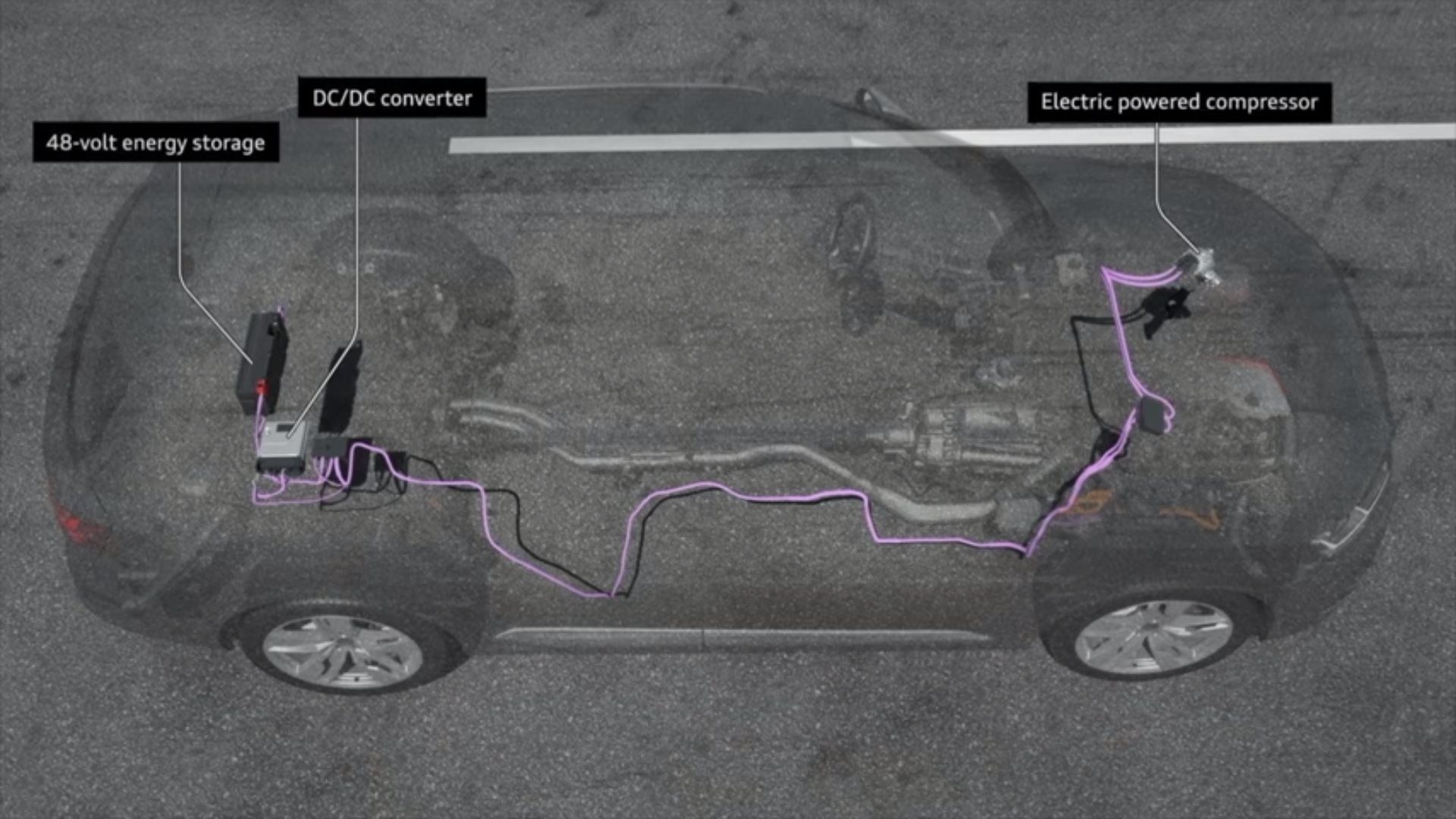Audi has done something amazing in the world of turbochargers.
If you’re a turbo-fan (and really, who isn’t?) then you’ve probably heard of turbo lag (or even been the victim of it). Turbo lag comes from the way a turbocharger works—since the turbo is powered by an engine’s exhaust gasses, it only starts working when the engine is engaged and only when exhaust is being produced. This means at low RPMs a turbocharger does almost nothing for engine performance, while at higher RPMs the turbocharger does a whole lot.
That in-between period from when an engine is idling and then going to full throttle can produce a lag in response when you put your foot down, starting off slow but then suddenly accelerating as the turbo kicks in. That delayed response is turbo lag.
Audi’s latest SQ7 doesn’t have that problem because of some very clever engineering. The SQ7 runs on a twin-turbocharged 4.0-L V8 diesel that has a secret weapon: an electrically-powered supercharger that completely eliminates turbo lag.
A supercharger is much like a turbocharger in that they both force more air into the engine, but while a turbocharger uses the engine’s exhaust to spool a turbine, a supercharger is powered directly off the engine’s crankshaft. This means a supercharger doesn’t suffer from turbo lag because it sucks in air at the same rate you put the pedal to the metal.
RELATED: AUDI SHOWS OFF NEW FLYING CAR CONCEPT
But just adding a supercharger doesn’t kill turbo lag. To do that, Audi had to remove the supercharger from the engine entirely and power it off a 48-volt battery. This allows the supercharger to wind up to 75,000 RPMs while the engine is barely engaged, sucking in way more air than a supercharger normally could and enough to overcome turbo lag.
Audi’s set up gets even more clever than that. At low RPMs, the supercharge does all the forced induction, while at mid-level RPMs only one turbocharger kicks in. At high RPMs, when there’s enough exhaust to power them, both turbochargers engage for maximum power.
If that didn't make sense, here's Jason Fenske of Engineering Explained to, er, explain.


